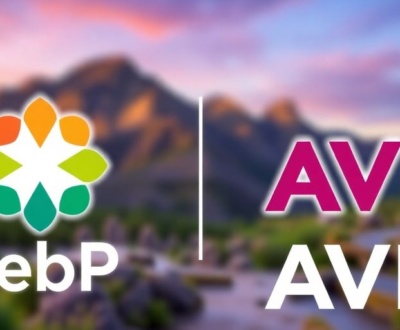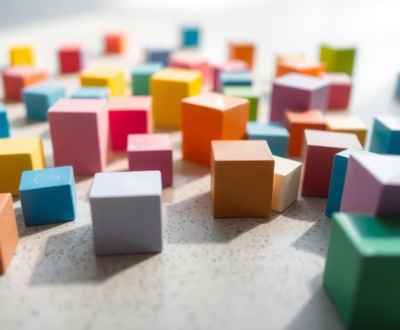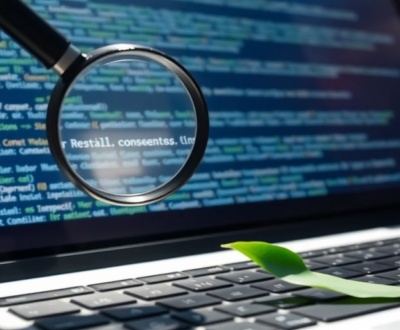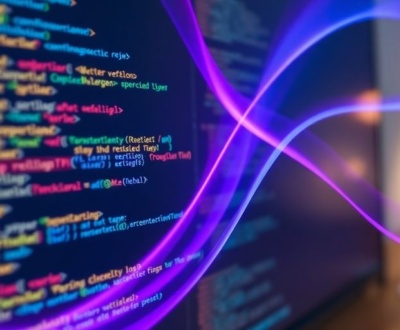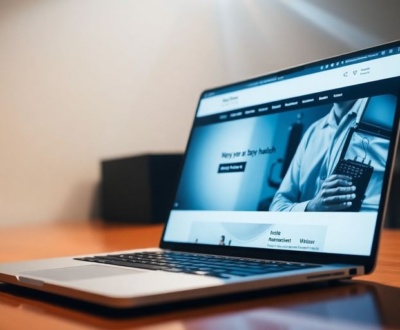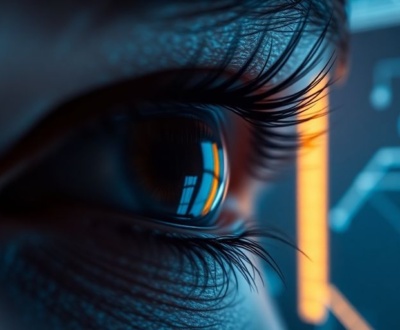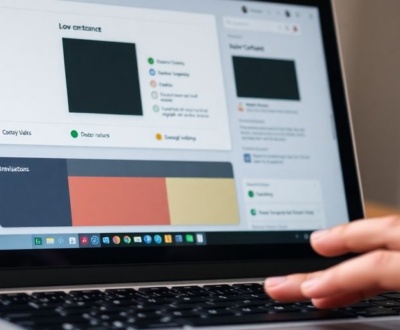Exploring the Future of Web Design: How Webflow 2025 is Shaping Innovation
- February 16, 2025
- Blog
Webflow 2025 is shaking things up in the web design world. It’s making it easier for anyone to create websites without needing to know how to code. This means more people can get creative and build their own sites. With new tools and features, Webflow is changing how we think about web design, making it faster and more fun. Whether you’re a pro or just starting out, Webflow 2025 has something to offer. Let’s dive into what makes this platform a game-changer.
Key Takeaways
- Webflow 2025 is making web design accessible to everyone, regardless of coding skills.
- The platform’s new tools are speeding up the design process and making it more efficient.
- AI integration in Webflow 2025 is enhancing user experiences and design capabilities.
- Webflow 2025 supports seamless collaboration between designers and developers.
- The platform is driving innovation in web design with its focus on creativity and technology.
The Evolution of Webflow 2025: A New Era in Web Design
Revolutionizing Design with No-Code Solutions
Webflow 2025 is shaking things up in web design by making it accessible to everyone, not just tech wizards. With its no-code solutions, you can build a website without knowing a single line of code. Imagine dragging and dropping elements like you’re playing a game, and voila, you have a website. It’s like magic, but real. This approach is making web design something anyone can do, not just those who can speak HTML and CSS fluently.
Empowering Designers with Advanced Tools
Designers today have a toolbox that those from a decade ago could only dream of. Webflow 2025 offers advanced tools that give designers the freedom to create without limits. Want to add some animation? Go for it. Need a custom layout? Easy peasy. These tools are not just about making things look pretty; they’re about giving designers the power to bring their wildest ideas to life. Creativity is the name of the game, and Webflow is the playground.
Streamlining Development Processes
Gone are the days of back-and-forth emails between designers and developers. Webflow 2025 streamlines the development process, making it smoother than a fresh jar of peanut butter. With a more integrated approach, designers can hand off projects to developers with everything they need in one place. This means faster project completion and less time spent fixing miscommunications. Everybody wins, especially those tight deadlines.
Webflow 2025 is more than just a tool; it’s a movement towards making web design a seamless, creative, and inclusive process for all.
Webflow 2025: Bridging Creativity and Technology
Enhancing User Experience with AI Integration
Webflow 2025 is all about making websites smarter. AI tools are now baked into the platform, helping designers create websites that don’t just look good but also understand user behavior. Imagine a site that tweaks itself based on how visitors interact with it. This is the new normal. AI can suggest design changes, optimize layouts, and even personalize content for each visitor, making the web experience more engaging.
Innovative Design Features for Modern Websites
Gone are the days of static web pages. With Webflow 2025, designers have access to a toolbox full of innovative features. From dynamic animations to interactive elements, the platform offers endless possibilities to bring creativity to life. Designers can now experiment with 3D elements, parallax effects, and more without writing a single line of code. This means more freedom to push the boundaries of what’s possible on the web.
Seamless Collaboration Between Designers and Developers
In the past, designers and developers often worked in silos, leading to miscommunication and delays. Webflow 2025 changes the game by providing a shared space for both to collaborate in real-time. Designers can create and tweak designs, while developers can simultaneously work on the backend. This integration not only speeds up the development process but also ensures that the final product aligns perfectly with the initial vision.
Webflow 2025 is not just a tool; it’s a bridge connecting the creative minds of designers with the technical expertise of developers, making the web a more exciting place for everyone involved.
How Webflow 2025 is Redefining Web Development
Accelerating Project Timelines with Automation
In 2025, Webflow is making waves by speeding up how fast websites get built. Automation is a big part of this change. It cuts down on manual errors and slashes processing time, making everything run smoother. Imagine cutting your project timeline in half because the platform handles repetitive tasks for you. This means less time spent on tedious tasks and more time focusing on what really matters—creating a stunning website.
Customizing Websites with Advanced CSS Capabilities
Webflow 2025 is all about giving you control over your site’s look and feel. With advanced CSS features, designers can now explore new horizons in creativity. Want to add some cool animations or dynamic effects? No problem. The platform lets you tweak custom CSS properties and values, making it easier than ever to build stylish and responsive designs. Plus, the visual interface means you don’t have to dive deep into code to make it all happen.
Integrating E-commerce and CMS for Business Growth
Businesses today need websites that do more than just look good. They need sites that can handle e-commerce and manage content efficiently. Webflow 2025 integrates these features seamlessly, offering a robust CMS and e-commerce capabilities. This means businesses can manage their online presence and sales all from one place, streamlining operations and driving growth. Whether you’re a small startup or a large enterprise, this integration is a game-changer for managing your digital storefront.
The Impact of Webflow 2025 on the Design Industry
Transforming Design Education and Skillsets
Webflow 2025 is shaking up how designers learn their craft. Traditional design education is getting a facelift, with more emphasis on practical skills and less on theory. Now, students are diving right into tools like Webflow, learning by doing. This hands-on approach is not just about making things look pretty—it’s about understanding how design impacts user experience and functionality. Designers are becoming more versatile, equipped to handle both the creative and technical sides of projects.
Fostering a Community of Innovative Designers
Webflow is more than just a tool; it’s a community. Designers from all over the world are connecting, sharing ideas, and collaborating on projects. This global network is a breeding ground for innovation, where new design trends are born. The platform’s forums and meetups are buzzing with activity, as designers seek feedback and inspiration from their peers. This sense of community is pushing the boundaries of what’s possible in web design.
Driving Industry Standards and Best Practices
With Webflow 2025, there’s a big shift towards standardizing design practices. The platform encourages designers to stick to best practices, ensuring that websites are not only visually appealing but also accessible and user-friendly. This push for standardization is making the web a more consistent and predictable space, which is great news for users. Plus, it means designers can spend less time reinventing the wheel and more time focusing on creativity.
Webflow 2025 is not just a tool for creating websites; it’s a catalyst for change in the design industry. By transforming education, fostering community, and driving standards, it’s setting the stage for a new era of web design.
Exploring the Future Trends in Webflow 2025

The Rise of Immersive 3D Web Experiences
In 2025, web design trends are taking a bold step forward with immersive 3D web experiences. These aren’t just gimmicks; they transform how users interact with websites. Imagine navigating a site where products pop out of the screen, offering a virtual "touch and feel" experience. This trend isn’t just about flashy graphics. It’s about creating an environment where users feel engaged and connected.
Sustainability and Eco-Friendly Design Practices
With climate change being a hot topic, web designers are focusing on sustainability. Webflow 2025 supports eco-friendly practices by optimizing code and reducing energy consumption. Designers are encouraged to use minimalist designs that load faster and consume less power. This isn’t just good for the planet—it’s good for user experience, too.
Personalization and Accessibility in Web Design
Personalization is key in 2025. Websites are becoming smarter, adapting content to individual users’ preferences. Webflow 2025 is at the forefront, offering tools that allow designers to create personalized experiences effortlessly. Accessibility is also a major focus. Ensuring that websites are usable by everyone, including those with disabilities, is no longer optional—it’s essential.
Webflow 2025 is not just about keeping up with trends; it’s about setting them. By embracing new technologies and focusing on user-centric design, Webflow continues to push the boundaries of what’s possible in web design.
Webflow 2025: A Catalyst for Business Innovation

Building High-Converting Landing Pages
Creating landing pages that convert is more important than ever, and Webflow 2025 makes it easier. With its intuitive drag-and-drop interface, even those with minimal design skills can whip up a page that looks professional. This tool empowers businesses to craft pages that not only attract visitors but also drive conversions. Key features include customizable templates, real-time editing, and integrated analytics to track performance. It’s all about making the design process straightforward and effective.
Optimizing SEO with AI-Driven Tools
In 2025, SEO isn’t just about keywords; it’s about understanding user intent and delivering relevant content. Webflow’s AI-driven SEO tools help businesses stay ahead of the curve. These tools analyze site performance, suggest improvements, and even automate some of the more tedious tasks like meta-tag optimization. By leveraging AI, companies can ensure their sites are not only visible but also competitive in search rankings.
Leveraging Data Analytics for Strategic Insights
Data is king, and Webflow 2025 gives businesses the tools to harness it effectively. With integrated analytics, companies can gather insights into user behavior, track engagement, and measure conversion rates. This data-driven approach allows businesses to make informed decisions, tailor their strategies, and ultimately, enhance their online presence.
Webflow 2025 isn’t just about building websites; it’s about building businesses. With its focus on innovation and efficiency, it provides the tools needed to thrive in a digital-first world.
Webflow’s influence in the business world is undeniable. Recognized as one of the best places to work in 2025, it’s clear that Webflow’s commitment to innovation and excellence extends beyond its product offerings.
Webflow 2025 and the Power of AI in Web Design
Automating Repetitive Tasks for Efficiency
AI is like your personal assistant in web design, taking care of those mundane, repetitive tasks that eat up your time. Imagine not having to manually tweak every single element on a page. Webflow 2025 uses AI to automate these tasks, freeing up designers to focus on the creative aspects. It’s like having a second pair of hands that never get tired. Here’s how it helps:
- Automatically adjusts layouts for different screen sizes.
- Generates code snippets for common design patterns.
- Updates content across multiple pages with a single change.
This automation doesn’t just save time; it also reduces errors, making the development process smoother.
Enhancing Creativity with AI-Driven Features
With AI in the mix, creativity gets a big boost. Webflow 2025 introduces AI-driven features that inspire and assist designers in crafting unique websites. Think of AI as a brainstorming buddy that never runs out of ideas. It suggests design elements, color schemes, and layout options that you might not have considered. Plus, it learns from your style and preferences, offering personalized recommendations. Here’s what it brings to the table:
- Intelligent design suggestions based on current trends.
- Personalized templates that match your brand’s aesthetic.
- Real-time feedback on design choices to enhance visual appeal.
By integrating AI, designers can push the boundaries of creativity without getting bogged down by technical details.
Addressing Ethical Considerations in AI Design
As AI becomes more integral in web design, it’s crucial to think about the ethical side of things. Webflow 2025 takes this seriously, ensuring that AI tools are used responsibly. Here are some key points:
- Transparency: Users are informed about how AI decisions are made.
- Bias Prevention: Efforts are in place to ensure AI doesn’t favor certain designs or content.
- Privacy: User data is protected, with strict guidelines on its use.
These considerations ensure that while AI enhances design, it doesn’t compromise ethical standards.
Webflow 2025 is not just about making web design faster; it’s about making it smarter and more thoughtful. By integrating AI, it balances efficiency with creativity, ensuring that designers can create stunning websites without losing their personal touch.
Conclusion
So, here we are, looking at a future where Webflow 2025 is not just a tool but a game-changer in web design. It’s making things easier for everyone, from seasoned pros to newbies. No more getting stuck on coding when you just want to bring your ideas to life. With Webflow, creativity flows without the usual roadblocks. It’s like having a magic wand for web design. As we move forward, it’s clear that Webflow is setting the stage for more innovation, making web design more accessible and fun. Who knows what we’ll be able to create next? One thing’s for sure, the future of web design looks bright, and Webflow is leading the way.
Frequently Asked Questions
What makes Webflow 2025 different from other web design tools?
Webflow 2025 stands out because it lets you design websites without needing to know how to code. This means more people can create cool, interactive sites easily.
How does Webflow 2025 help with website building?
Webflow 2025 uses a drag-and-drop system, making it simple to create and customize websites. You can add animations and interactive features without writing any code.
Can Webflow 2025 improve how fast websites are built?
Yes, Webflow 2025 speeds up the building process by automating many tasks. This helps get websites up and running faster.
Is Webflow 2025 good for businesses?
Absolutely! Webflow 2025 helps businesses make unique websites that attract customers. It’s also cost-effective, saving money while building great sites.
Does Webflow 2025 support teamwork between designers and developers?
Yes, Webflow 2025 allows designers and developers to work together easily, reducing misunderstandings and making the process smoother.
How does Webflow 2025 use AI in web design?
Webflow 2025 uses AI to help automate tasks and enhance creativity. This means designers can focus more on creating while AI handles repetitive work.
About this blog
We are a digital marketing company with a focus on helping our customers achieve great results across several key areas.
Request a free quote
We offer professional SEO services that help websites increase their organic search score drastically in order to compete for the highest rankings even when it comes to highly competitive keywords.



